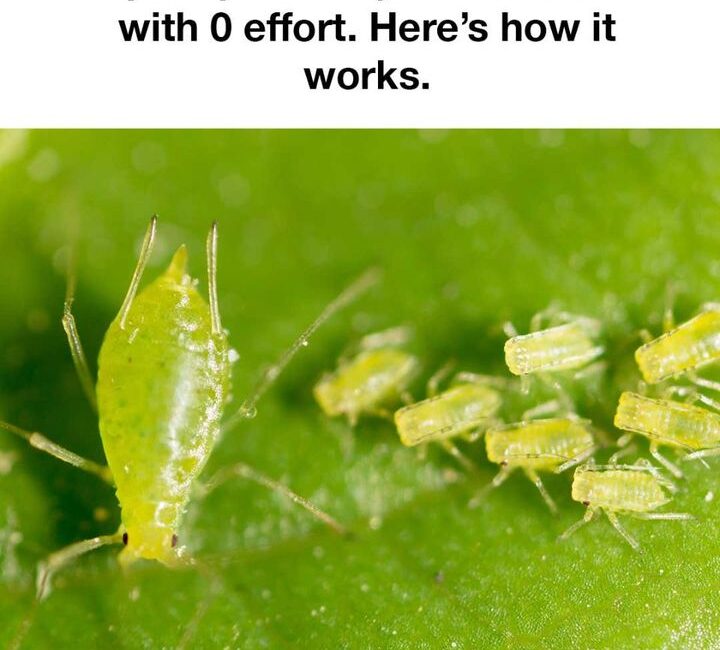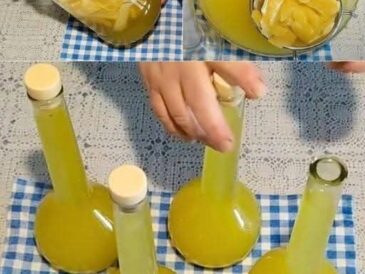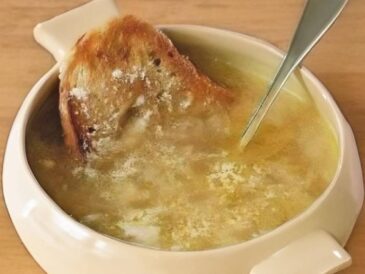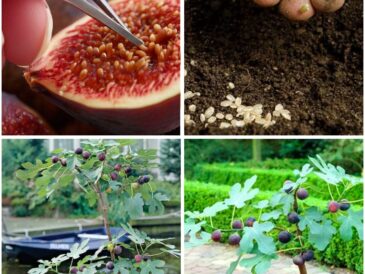Aphids, those tiny, soft-bodied insects, are notorious pests in gardens and on houseplants. Though small, they can cause significant damage to your plants by sucking out sap, weakening the plant, and even transmitting plant viruses. Their rapid reproduction rate makes them particularly troublesome, and once an infestation takes hold, it can be challenging to control.
But what if we told you there’s a way to repel aphids in just 3 minutes with minimal effort? Yes, you read that right. It’s possible to get rid of aphids and protect your plants in a matter of minutes using a simple, natural approach. In this article, we’ll dive into how this works and reveal the best strategies for aphid control that will make you wonder why you didn’t know this sooner!
Understanding Aphids and Why They’re a Problem
Before we get into the solution, let’s take a quick look at why aphids are such a problem for plants.
- Feeding Behavior: Aphids feed on plant sap by inserting their needle-like mouthparts into the plant tissue. As they feed, they remove nutrients, weakening the plant and causing yellowing of the leaves, stunted growth, and in severe cases, plant death.
- Rapid Reproduction: Aphids can reproduce at an alarming rate. A single aphid can give birth to 80 to 100 offspring in a week, and many aphid species can reproduce without mating (parthenogenesis). This exponential growth leads to massive infestations in a short time.
- Transmission of Plant Diseases: Aphids can carry and spread viruses that cause further damage to plants. As they feed on an infected plant and then move on to another, they can transfer disease-causing pathogens.
Given the harm aphids cause, it’s crucial to act quickly when you notice them on your plants.
The 3-Minute Aphid Repellent Solution: Why It Works
Now, let’s get to the exciting part: How to repel aphids in just 3 minutes with minimal effort.
There are several natural, non-toxic ways to keep aphids at bay, but one method stands out due to its simplicity and efficiency: using a natural homemade spray.
The key ingredients for this quick aphid repellent are commonly found in most households:
- Dish Soap (preferably mild, unscented)
- Water
These ingredients, when mixed properly, create a solution that works to repel aphids in a few minutes, with zero chemicals and almost no effort required.
How It Works: The Science Behind It
You may be wondering how such a simple solution can work wonders in repelling aphids. Let’s break it down:
1. Dish Soap: Breaking Down the Aphid’s Protective Coating
Dish soap works effectively on aphids due to its surfactant properties. Surfactants are compounds that reduce surface tension, allowing water and soap to spread evenly on surfaces. When you spray the soap solution on aphids, the soap disrupts their outer waxy coating (called the cuticle) that protects them from dehydration. This dissolves the protective layer and causes the aphids to dehydrate and eventually die.
In addition, dish soap can also suffocate aphids by clogging their tiny breathing holes (spiracles), leading to suffocation.
2. Water: Dilution and Easy Application
Water, of course, acts as a medium that dilutes the dish soap, making the solution safe for your plants while still effective in targeting the aphids. Water also ensures the solution can spread evenly on plant surfaces, especially on the underside of leaves where aphids typically congregate.
Together, the combination of dish soap and water is a safe and efficient way to kill aphids without harming your plants or the environment.
How to Make and Apply the 3-Minute Aphid Repellent Spray
Now that we understand the science behind it, let’s go through the steps of creating and applying this simple aphid repellent.
What You’ll Need:
- 1 tablespoon of mild dish soap (unscented is preferable)
- 1 quart (4 cups) of water
- A spray bottle
- A funnel (optional)
Steps to Make the Spray:
- Prepare the Spray Bottle: Take a clean spray bottle. You can use an old bottle from a previous cleaning product, but make sure it’s well-rinsed to avoid chemical contamination.
- Mix the Solution: Pour 1 quart (4 cups) of water into the spray bottle. Add 1 tablespoon of mild dish soap to the water. Use a funnel to prevent spills if necessary. Make sure the soap is thoroughly mixed with the water.
- Shake the Bottle: Secure the lid and shake the bottle gently to ensure the soap dissolves completely in the water.
Application:
- Test First: Before spraying the entire plant, test the solution on a small, inconspicuous area of the plant. This ensures that your plants are not too sensitive to the soap mixture.
- Spray Directly on Aphids: If the test goes well, spray the solution directly onto the aphids. Focus on the undersides of leaves, stems, and other areas where aphids are likely to gather. Be sure to cover the pests thoroughly, as the soap solution needs to come into contact with them to be effective.
- Wait for 3 Minutes: After spraying, wait for about 3 minutes. The dish soap will begin to break down the aphids’ outer layer, causing them to dehydrate or suffocate.
- Rinse if Necessary: After waiting for 3 minutes, rinse off the plant with clean water, especially if you’ve applied the solution heavily. This helps remove any residual soap and prevents any potential damage to the plant.
Repeat as Needed:
Check your plant after a few days. If you notice aphids returning, repeat the process. You can use this solution as often as needed, especially during the early stages of an aphid infestation.
Additional Tips for Aphid Control
While the dish soap spray is highly effective for quick aphid control, there are some additional steps you can take to further protect your plants from future infestations:
1. Use Natural Aphid Predators:
Encourage beneficial insects like ladybugs, lacewings, or predatory beetles to visit your garden. These insects feed on aphids and can help keep their population under control.
2. Introduce Companion Plants:
Certain plants, such as garlic, chives, and marigolds, naturally repel aphids. Planting these near aphid-prone plants can help deter infestations.
3. Apply Neem Oil:
Neem oil is another natural pesticide that is effective against aphids. It works by disrupting the aphids’ hormonal systems, preventing them from feeding and reproducing. Neem oil can be used in combination with the dish soap spray for long-term control.
4. Keep Your Plants Healthy:
Aphids are more likely to target stressed or unhealthy plants. Keep your plants well-watered, fertilized, and pruned to reduce the likelihood of aphid infestations. Healthy plants are better able to fend off pests naturally.
Why This Works in 3 Minutes with Zero Effort
What makes this aphid repellent so effective is its simplicity. Within just a few minutes, you’re able to use common household ingredients to create a solution that kills aphids without using harmful chemicals. Plus, the quick and easy application ensures minimal disruption to your daily routine—just spray and go!
With this method, you don’t need to rely on expensive chemical treatments that might harm beneficial insects or damage your plants. Instead, you can repel aphids safely and efficiently, all within 3 minutes and with very little effort. It’s a win-win for both your garden and your peace of mind.
Conclusion
Aphid infestations don’t have to be a major hassle for gardeners. With this simple, all-natural solution using dish soap and water, you can repel aphids in just 3 minutes with zero effort. It’s an easy, effective, and eco-friendly way to keep your plants healthy, free from pests, and looking beautiful.
So, the next time you spot aphids on your plants, don’t panic! You now know how to deal with them quickly and naturally, without any stress or complicated treatments.




